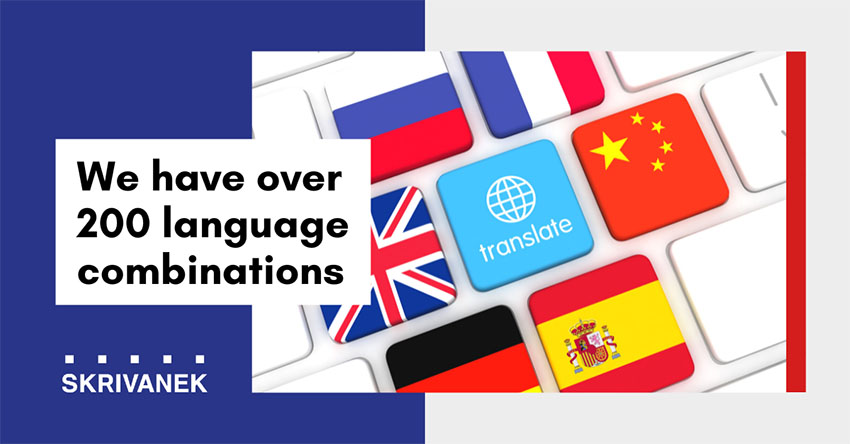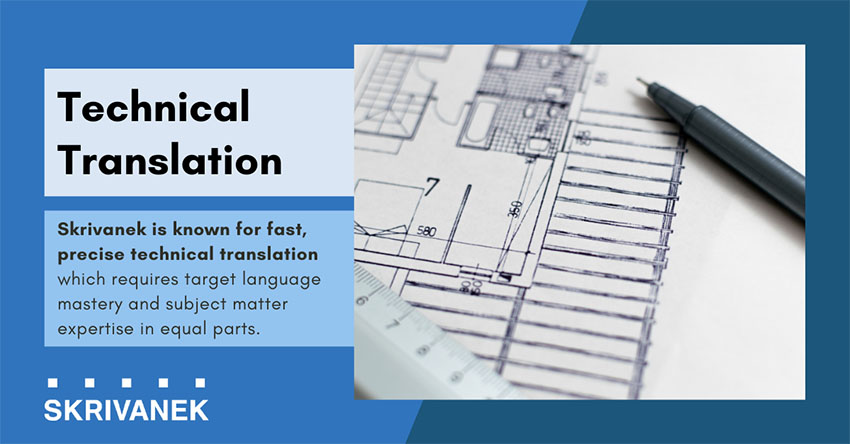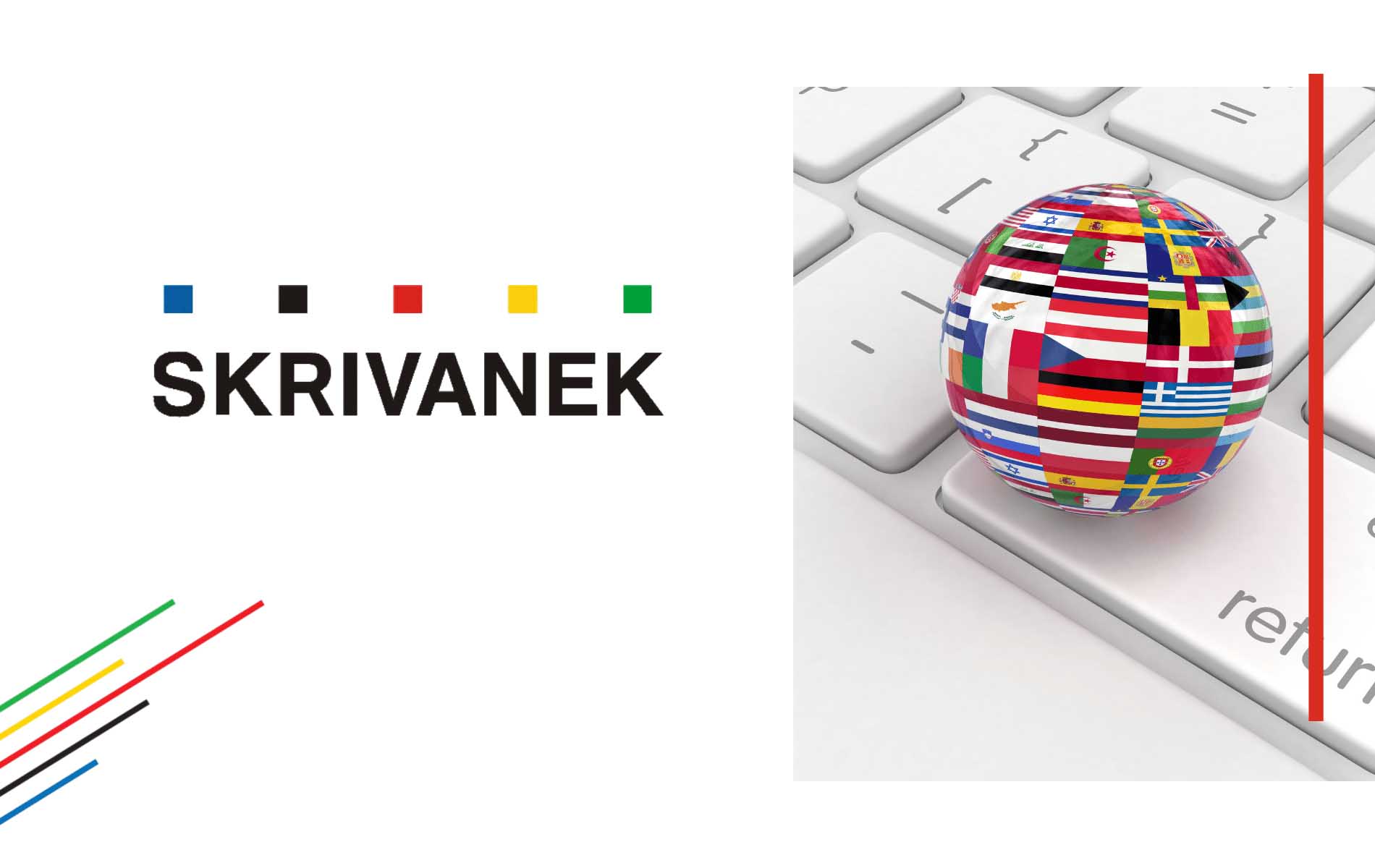Skrivanek is a language service provider (LSP) founded by Pavel Skrivanek in 1994. From its early roots in Central and Eastern Europe it has grown to encompass a global network with 45 offices in 17 countries. The company is consistently ranked among the top 100 LSPs in the world by Common Sense Advisory (an industry researcher of LSPs), and they regularly receive ISO certification, which they maintain through rigorous attention to best practices, data security, and QA.
At this point Skrivanek offers their services in over 200 language combinations.
Easy Engineering: What are the main areas of activity for your company?
Skrivanek: We serve clients who need to communicate with audiences in foreign countries, from large global corporations to individuals. For companies specializing in subject matter from engineering to entertainment we offer translation, interpretation, localization, and every detailed process those services might require, like software testing, online conference moderation, and video subtitling.
Honestly it is our broad, full-service option that often makes us stand out. For example, an engineering company might choose to expand into a foreign country; when they do, they might need every type of translation and localization we offer, from the re-design of brochures for foreign cultures, to multimedia eLearning modules for employee training, to the transcreation of complex diagrams and blueprints for instruction manuals. We can take care of it all, with excellent results. For that engineering client, for example, we will assemble translation teams that include native linguists along with engineering experts to translate not only the words involved, but also the tone and intention, with tireless attention to details like numerical values and industry specific terminology.
Our business activity is growing in many directions. We have developed long-term working relationships with major corporations and intergovernmental agencies like the EU and the UN, managing international conferences with teams of interpreters and technicians. Our multimedia services like subtitling are used by Netflix, HBO, and the Disney Channel. In every situation we’re attuned to the full range of global communication needs each client might have; in this way we not only serve their needs but we also expand and refine our services.

E.E: Can you tell us anything about new products/developments in your industry?
Skrivanek: We are currently excited about the expansion of digitization in the realm of public services as we see more authorities accept and promote information exchange through a digital interface instead of requiring paper forms to be exchanged, signed, and submitted. This is going to save a lot of time and hassle when dealing with government requirements during translation.
For civil engineering projects, for instance, acquiring permits from governmental entities will be easier as digitization of required processes streamlines document exchange. And of course, the fact that engineering documents are full of technical terminology means that ever-improving translation tools continue to increase the accuracy and reduce the costs of engineering translations.
AI is gradually transforming many tasks, making them more streamlined and thus faster to accomplish. Over many years we have experienced rapid improvements to our processes through the use of Translation Memory (TM), Machine Translation (MT), Translation Management Systems (TMS), and Computer Assisted Translation (CAT) tools.
We learn how to use the latest tools, train our specialists, and then we try to maximize the benefit of whatever technology is available to us. For example, we have developed an offering we call our “email translation-support service” that uses simple email to offer direct communication by any company’s employees to our staff. This way they can request a translation when they are in transit, overseas, or simply working under a pressing deadline and unable to wait for the completion of a longer request process. We offer a secure connection, quick response, 1-hour turnaround, and over 200 language combinations. Advanced technology plus innovative thinking about how to better serve our clients – that’s how change happens in our industry.
The Skrivanek work ethic is somewhat defined by the autonomy of our individual specialists whose creativity is encouraged. When new technology becomes available, we explore and often purchase it. When problems arise, we don’t just patch them up temporarily, we seek new and permanent ways of handling the issues involved.
E.E: What range of products do you offer?
Skrivanek: As mentioned above, we can prepare a company’s materials and products for any market in the world in terms of language and concept localization. This means we can translate documents, brochures, websites, correspondence, product packaging, user manuals – everything a company needs for foreign customers.
What some people expanding into new countries may not understand at first is that in addition to translating the language we also “localize” any materials you hope to use in those new countries. This means that we adapt graphics, music, colors, layout – even flash videos, podcasts, full-length films — to the cultural preferences of your target audience. This is an area in which we have deep experience and our ability to localize for scores of countries extends into all materials related to your product.
Engineering translation – including one of our strongest specialties, automotive translation – benefits from our attention to the full range of legal issues in every target country. Localization teams for engineering products include experts in the local regulations relevant to your product. This is an extremely important area of knowledge that we are highly experienced at incorporating into our language services.

E.E: At what stage is your market currently?
Skrivanek: The language service market is literally the entire world of globally active businesses. The huge range of companies in need of our services is obvious when you look at our extensive, varied client list. It’s extremely exciting; the opportunities for us to expand that client list and our language service experiences are enormous.
Engineering and technology companies are some of the most rapidly growing areas of opportunity for our global communication services. This is because as they incorporate their own new visions and technologies it is not an exaggeration to say that the world is looking to these fields for solutions to enormous problems. We put a lot of focus on preparing for the kind of expertise and services high-tech and engineering translation projects require.
The market is full of unexpected changes that aren’t always positive, so we try to find ways to grow from these as well. Wars, pandemics, supply-chain interruptions — not only are language services required, we often find ourselves involved at the problem-solving level, helping to bridge gaps and build or rebuild connections. We were extremely busy, for instance, growing our online conferencing capability during the pandemic. And with this service as well we have a market of hundreds of millions of people.
E.E: What can you tell us about market trends?
Skrivanek: One major trend in our industry that has been going on for a couple of decades now is greater use of CAT tools and other language technology to make translation more efficient and therefore more accurate and cost-effective. There is increasingly advanced software that we use for many other tasks as well, such as voiceover, software QA, and subtitling.
This is connected to a second major trend in language services, and that is the need to provide translation, transcription, and localization for multimedia elements. As these features become easier to create and especially desirable to some demographics, competitive companies choose them because human beings all over the world are responsive to them, often more responsive to such non-verbal communication than verbal.
A third trend is the long-distance interpreting and conference moderation that we are called on more and more to provide. This can promote efficient global, multilingual transactions, as we all know from two years of participating in long-distance communication. It’s another service we constantly analyze for ways to improve participants’ experiences – it’s a young service that’s growing and improving rapidly.

E.E: What are the most innovative products marketed?
Skrivanek: In the language service industry, innovation usually comes in the form of technology that takes on part of the job that human translators once did. CAT tools for instance, use computer memories of translated phrases along with words that have already been processed and they speed up the work of the human translator by offering those phrases as the human works through a document. For a technical document this is particularly helpful as there is a lot of repetition and not a huge requirement for creative thought.
Neural Machine Technology is another example of innovation that is currently replacing older forms of Machine Translation like rules-based and statistical. NMT functions more like the human mind does, “learning” along tracks of connection that are actually rather mysterious and hard to explain, even for experts.
Innovation also comes in the form of processes that human language specialists develop to incorporate new technologies. In our industry that includes workflow improvements, effective training, and marketing concepts for our customers’ localization needs.
E.E: What expectations do you have for 2022?
Skrivanek: So far, we are seeing our efforts drawn more than ever toward fulfilling multimedia projects – localized websites with all kinds of video and audio features, films, games, tv shows, and eLearning videos. You can see our work on Netflix, Disney Channel, and HBO.
Because of the increased use of multimedia even by companies in technical fields like engineering, we expect this trend to continue. We are happy with that because it draws on so many of our strengths, our talents, and our investments in technology.
And to be very general, we see language services of all kinds increasing – LSPs on average saw increases upwards of 20% in 2021 according to Common Sense Advisory. No matter what’s going on in the world, the greater the level of globalization the world experiences, the more need there seems to be for effective communication between different cultures.


